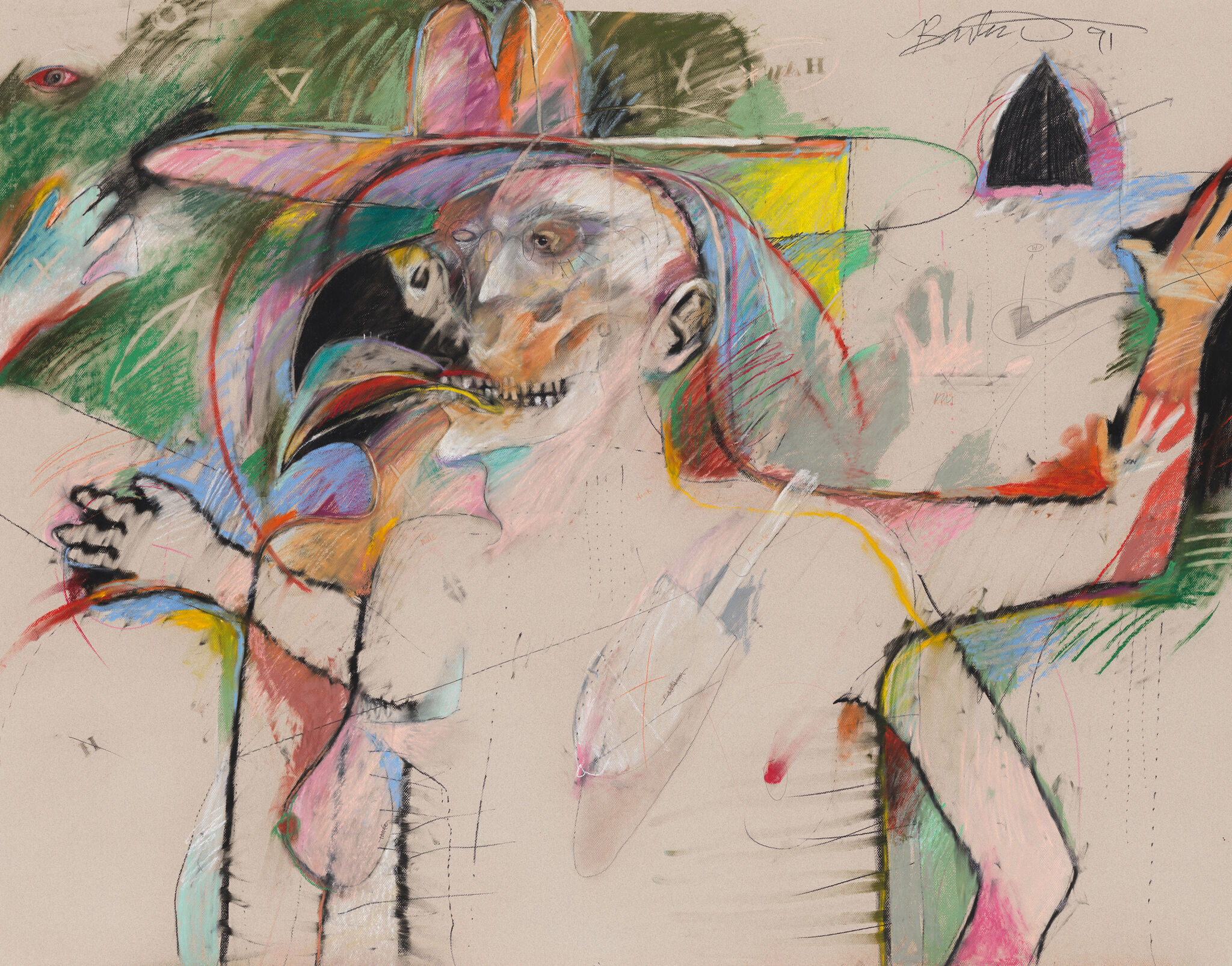What It Becomes | Art & Artists
Aug 24, 2024–Jan 12, 2025
What It Becomes | Art & Artists
Rick Bartow
1
To create drawings like Autobiographical Hawk, Rick Bartow began by making a few improvisational gestures on the page, gradually adding and erasing marks until figures emerged. Recalling the origin of his animal-human hybrid drawings, which he referred to as “transformational images,” Bartow explained: “One evening in my studio, I realized that I could draw motion—a single figure in action. . . .Then the drawings began to transform rapidly into split figures, two faces creating one, man and animal sharing bodies.” An artist of Wiyot heritage, Bartow was partially inspired by themes of shapeshifting that appear in certain Indigenous storytelling traditions. His confrontation of painful experiences from the Vietnam War also contributed to the development of his morphing figures; Bartow often described drawing as a curative process, a “fire of marks and color” that brings about renewal and healing.

